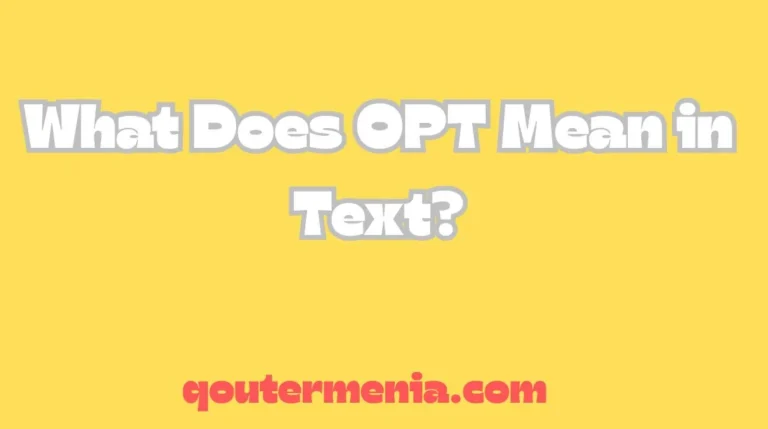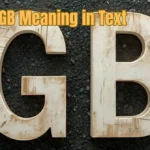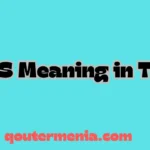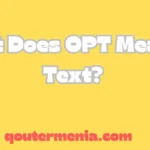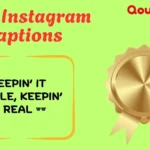Have you ever received a message where someone said “You can opt for that” or seen “OPT” pop up in a chat and wondered, “What does OPT mean in text?” 🤔 You’re not alone!
In today’s fast-paced world of texting and social media, abbreviations like “OPT” have become part of everyday communication. People search for this term because it can mean different things depending on the context — from casual chats to technical or professional fields.
This article breaks down the meaning, origin, usage, and different interpretations of “OPT” across platforms like WhatsApp, Instagram, and TikTok — plus how to respond naturally when someone uses it.
Let’s dive in and decode the mystery behind “OPT.”
🧩 Meaning & Definition of “OPT”
At its core, “OPT” means “to choose” or “to make a choice between options.”
It comes from the verb “opt,” which implies selecting a preference after considering alternatives.
✅ Primary Meaning:
- To make a decision or choice.
- Example: “I’ll opt for coffee instead of tea.” ☕
✅ Secondary Meanings:
Depending on the context, “OPT” can also represent:
- “Optional Practical Training” — a program for international students in the U.S. (in academic and immigration settings).
- “One-Time Password” — often confused with “OTP,” but occasionally mistyped as “OPT” in texting.
So, in casual chat, “OPT” = choose.
In technical fields, “OPT” = training program or operational term.
🕰️ Background & Origin of the Word “OPT”
The term “opt” originates from the Latin word “optāre,” meaning “to choose or wish.”
It entered English usage in the 1800s, initially referring to making a deliberate choice between options.
Over time, as English evolved and technology advanced, “opt” became a universal verb across different contexts — from academic choices (opt for a major) to online interactions (opt in or opt out of notifications).
The texting abbreviation “OPT” likely became popular in the early 2000s with the rise of SMS and online forms, where brevity was key.
💬 Usage in Different Contexts
The meaning of “OPT” shifts slightly depending on where and how it’s used:
🔹 Casual Chats:
- Means choose or decide.
- “You can opt for pizza tonight 🍕”
- “I opted out of the group project 😅”
🔹 Social Media Captions or DMs:
- Indicates preference or decision-making.
- “Opt for kindness every time 💛”
- “I might opt out of this challenge 😂”
🔹 Professional or Academic Settings:
- Refers to making a selection, choice, or decision related to work, education, or processes.
- “Students can opt for a remote internship.”
- “Please opt in to receive company newsletters.”
In short, “opt” reflects choice, flexibility, and decision-making — whether in everyday talk or formal communication.
📱 Meanings Across Platforms
Here’s how “OPT” is commonly understood across major platforms:
| Platform | Common Interpretation | Example |
|---|---|---|
| Choose / Select | “You can opt for dinner tomorrow instead.” | |
| Decision / Lifestyle Choice | “Always opt for self-love 💕” | |
| TikTok | Trend Choice or Opinion | “I’d opt for this sound over the original!” 🎶 |
| Snapchat | Opting in/out of content or streaks | “I’m opting out of streaks this week 🔥” |
👉 Note: On some platforms, users may mistakenly use “OPT” instead of “OTP” (One-Time Password). Always check the context before assuming its meaning.
⚙️ Other Fields & Technical Meanings
The abbreviation OPT has specialized meanings beyond texting and chat culture:
| Field | Meaning | Description |
|---|---|---|
| Education (USA) | Optional Practical Training | A temporary employment authorization for international students on F-1 visas. |
| Physics | Optical Technology | Refers to optical systems or light-based technology. |
| Medical | Operation Theatre / Optometry | Sometimes shortened from “optical” or “optometry.” |
| Aviation | Operational Performance Tool | Used for calculating flight performance. |
So, if you see “OPT” in professional documents or reports, it might have a technical or institutional meaning, not a casual one.
❌ Common Misconceptions & Mistakes
Many people confuse “OPT” with “OTP.”
Here’s a quick difference:
| Term | Full Form | Meaning |
|---|---|---|
| OPT | To choose / Optional Practical Training | Indicates making a choice or academic training. |
| OTP | One-Time Password / One True Pairing | A security code or romantic pairing in pop culture. |
Common Mistakes:
- Saying “I didn’t get the OPT” when referring to a password code — ❌ (should be OTP).
- Using “OPT” for “option” — partially correct but grammatically off.
- Thinking “OPT” is a slang or acronym in texting — it’s actually a real English verb.
🔄 Similar Terms & Alternatives
| Word / Phrase | Meaning | Example |
|---|---|---|
| Choose | Make a selection | “I’ll choose option A.” |
| Select | Pick from choices | “Select your favorite.” |
| Decide | Reach a conclusion | “I can’t decide yet.” |
| Opt in | Agree to participate | “You can opt in for updates.” |
| Opt out | Decline participation | “I opted out of the contest.” |
💡 These terms are often interchangeable depending on formality and tone.
💬 How to Respond When Someone Says “OPT”
If someone uses “OPT” in a message, your reply should match the tone and meaning.
Examples:
A: “You can opt for the online class.”
B: “Good idea! I’ll go for that option 👍.”
A: “I opted out of the group chat.”
B: “Totally fine 😂 it was getting spammy anyway!”
A: “You should opt for lighter colors.”
B: “True, pastel shades look better 💗.”
A: “I’ll opt for dinner tomorrow.”
B: “Perfect! Let’s book the table 🍽️.”
These replies keep the chat natural and engaging.
⚖️ Differences From Similar Words
| Word | Difference from “Opt” | Example |
|---|---|---|
| Option | Noun form (thing you choose) | “You have two options.” |
| Opt | Verb form (action of choosing) | “I’ll opt for the first one.” |
| Prefer | Expresses liking something more | “I prefer tea over coffee.” |
| Decide | Implies final choice | “I decided to leave early.” |
In texting, “opt” is shorter and simpler than saying “I decided to choose.”
💞 Relevance in Online Conversations & Dating Apps
On dating platforms like Tinder, Bumble, or Hinge, “opt” is often used to express preferences and choices:
- “I usually opt for coffee dates ☕ first.”
- “Opt for honesty over pickup lines 😉.”
- “He opted out after the first match 😅.”
It subtly shows decision-making and boundaries — key traits in online dating culture.
In social media bios or captions, using “opt” can even signal self-awareness and empowerment, like “Opt for peace, not drama ✨.”
📈 Popularity & Trends Over Time
According to Google Trends, searches for “what does OPT mean” have steadily increased over the past few years, especially in the U.S., India, and the U.K.
Why?
- Because international students look up “OPT” for visa-related purposes.
- And social media users see “OPT” in captions and want to know its slang meaning.
This dual usage — casual and academic — keeps “OPT” relevant both in pop culture and academia.
❓ FAQs — What People Also Ask
1. What does OPT mean in texting?
“OPT” means to choose or make a decision. For example: “I’ll opt for that option.”
2. Is OPT the same as OTP?
No. OPT = choose, while OTP = One-Time Password or One True Pairing in fandom culture.
3. What does OPT stand for in education?
It stands for Optional Practical Training, a U.S. immigration term for student work authorization.
4. How is OPT used on Instagram or TikTok?
It’s used in captions to show preferences or personal choices, e.g., “Opt for kindness 💕.”
5. Can “OPT” mean something technical?
Yes. In aviation, medicine, and technology, “OPT” can refer to Operational, Optical, or Optimization terms depending on context.
🏁 Conclusion
In simple words, “OPT” means to make a choice — whether it’s choosing a meal, a lifestyle, or an academic path. It’s a versatile term used across casual chats, social media captions, and professional contexts.
While it’s often confused with “OTP,” “OPT” stands on its own as a legitimate English verb rooted in centuries of usage. Understanding its meaning helps you communicate clearly and confidently online — and avoid confusion in texts, emails, or dating conversations.
So next time someone says “You can opt for that,” you’ll know exactly what they mean — and how to respond! 😉

Emily Martin is the creative author at Qouter Menia, crafting heartfelt quotes and captions that beautifully express emotions.

